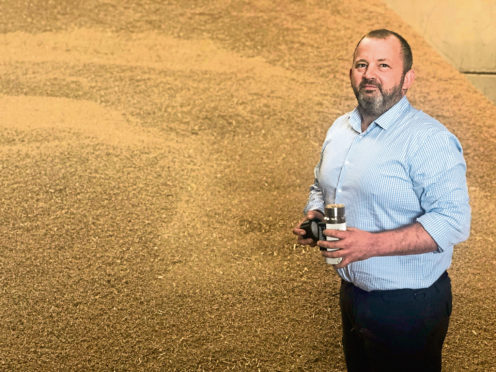Shoppers could soon be able to scan a QR code on a packet of oats to trace their origin and ensure they are gluten-free.
A project, overseen by the Soil Association Scotland-led Rural Innovation Support Service (Riss), is looking to develop distributed ledger, or blockchain, technology to allow oats to be traced back to their place of production.
The project, which involves six Aberdeenshire farmers, SAC Consulting and Edinburgh-based data company Wallet Services, was recently awarded £97,466 from the Scottish Government’s Knowledge Transfer and Innovation Fund (KTIF).
The Booth family of Savock Farm, Newburgh, near Ellon, is involved in the project alongside the Russells of Dams of Craigie Farm, Whitecairns, Aberdeen.
As well as working together in the Riss group, the two families are building an oat-processing mill so they can further guarantee a premium for their gluten-free oats. Although oats are naturally free of gluten, they are often processed in factories that may contain wheat or barley.
“Our simple idea is that someone will be able to pick up a packet of oats in the supermarket, scan a QR code, and see a whole dashboard of information tracing the oats’ journey from farm to shelf,” said Andrew Booth.
“As farmers we want to produce something the customer wants. Food scares have focused people’s minds, and consumers with coeliac disease have a limited selection, although the majority of people buying gluten-free are making a lifestyle choice. We want to be able to keep offering a premium for gluten-free oats in the supply chain.”
He said the farmers involved in the project were already recording various processes and actions at field level from shed cleaning to crop spraying and harvesting, but often on paper.
The digital platform being developed by Wallet Services will enable them to digitise the data and make it available to anyone.
Explaining the technology, Wallet Services marketing manager Iona Murray said: “Distributed ledger means multiple organisations can track and trace the exchange of data. It allows the data to exist outwith any one database, and be accessed by the people who need to see it. And the data is tamper-proof so we know it can be trusted.”
RISS group facilitator Paul Mayfield, a food and drink consultant with SAC Consulting, said: “With this system we could offer consumers absolute assurance and maintain the premium for farmers.
“We are currently bringing in processors to complete the supply chain, which would then be transparent at the click of a button.
“If we can do it for oats we could ensure the same traceability for potatoes, or soft fruit, organic produce or anything we like. And it tilts some power in the supply chain back towards the producers.”
